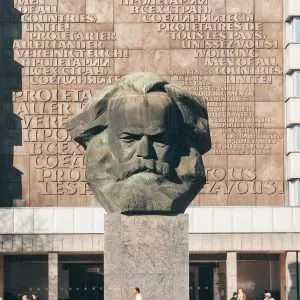Editorial Note:
This article about access to public space in India is being published on behalf of Applied Worldwide’s 2021 student essay competition. Students were prompted to respond to the question, “Why is sociology important?” We have awarded 17 finalists from all over the world, and will publish these essays over the next several weeks.
This essay was written by Ritika Varshney, a student at Indraprastha College for Women, Delhi University in India. This essay received a first place award. We had a really great turnout and would like to thank everyone who submitted an essay. We received a wide variety of creative interpretations and responses, so browse our essay directory!
Ritika Varshney
Bourdieu once said, “The function of sociology, as of every science, is to reveal that which is hidden.” I remember my first sociology lecture when I was confused about which course I should choose for my minor degree and thought I should give sociology a try. As soon as the lecture on “family and intimacy” began I immediately knew this is where I want to be. Sociology has given meaning to and helped explained the reason behind my own experiences.
Bourdieu’s words started to make more sense after each lecture that I attended—I uncovered something which was always around me. Sociology has not only generated critical thinking but has also made me observant of my environment. Recently, I have been keen on studying how people occupy space in the city through a sociological lens. In this essay, I lay out the importance of sociology to understand people’s access to public spaces in the city specifically how gender governs mobility in India.
Access to Public Space in India
Historically Don Mitchell (1995) points out public spaces like the Greek agora (marketplace), Roman fora or American parks, commons, marketplaces and squares were premised on exclusion even as they mediated interaction between people. Who can and cannot access public space is dependent on the criteria of citizenship only those who qualify as a citizen can have the access. Slaves, women or foreigners who may have worked in agora were excluded from political activities of public space because they were not “citizens.”
Similarly, the exclusion of a set of people exists in the present day based on their caste, class, race, religion, disability and gender.
Sociology and Social Exclusion
Sociology here becomes an important discipline to understand the varied experiences of people as they occupy public and private space. Intersectionality which is an integral part of sociology is a framework for conceptualizing a person, group of people, or social problem as affected by several discriminations and disadvantages. It takes into account people’s overlapping identities and experiences to understand the complexity of prejudices they face.
Migrant workers occupy the margins of the city without any official documentation of their habitat. Mike Davis (1992) argues that not only are poor increasingly sequestered in ghettos, but their every attempt to use public space for survival purposes—for instance, by the homelessness or street vendors—is criminalized. In cities like Mumbai and New Delhi hawkers are removed on daily basis. In a neo-liberal capitalist era where the poor are pushed to live in the periphery of the city, they are explicitly denied access to gated places—malls, coffee shops, restaurants, etc. There is a lack of space for the poor to exist and experience the city.
Sociology provides an in-depth theoretical and conceptual outlook on systems of oppression within our society as well as how this is associated with the acts of privilege and power. Muslims are pushed into ghettos due to discrimination faced by them on grounds of religion as they are denied rental housing. In sociology one traces repeating patterns to analyze discrimination faced by a group of people. India is a majoritarian Hindu nation where discrimination on basis of religion has become rampant and lead to the marginalization of Muslims in the city.
Women’s Access to Public Space in India
Urban studies have explored the access to public spaces by women. Gender plays an important role to understand the movement of women in the city. Women have been brought up to walk straight from home to school, home to office, home to friend’s home, from one safe place to another. Women are kept inside the private sphere and not allowed to enter the public sphere unless required because it is considered that the private sphere is safer than the public sphere.
“Lessons from South Asia” presents the most comprehensive gender-based violence (GBV) issues in South Asia. The report highlights that:
- South Asia has the highest female to male child mortality rate than anywhere else in the world, and
- has the highest rate of child marriage with remarkably high incidence of intimate partner violence (IPV) (Solotaroff & Prabha, 2014).
Risk Factors for Domestic Violence in India
Child marriage together with dowry, and illiteracy constitute the most common set of risk factors of domestic violence in South Asia. Feminist work has proven that women are more likely to experience violence at home than outside. In the name of “protectionism” women are encouraged to stay at home to uphold religious and cultural values. Shilpa Phadke, co-author of the book Why Loiter has pointed out that women are kept inside the home to protect sexual endogamy so that women don’t go outside and form liaisons outside of their class, caste and community.
If women form such liaisons it is considered that they will bring shame to the family and fail to uphold the sanctity of the institution of family which is rooted in gender-based discrimination. The rationale behind this is not the safety of women rather to restrict their mobility and access to public space. Sociology deals with the question of gender and sociologists have actively included gender in their respective work. Sociology has incorporated feminist literature that produces well-rounded research that can be used in policymaking and planning for empowering women.
Urban Planning and Access to Public Space
Urban planning has largely been gender blind. To make cities more accessible to women and other minorities it is imperative to incorporate sociology in urban planning and architecture. A sociological approach considers the multiplicity of differences and is sensitive to how they intersect with gender to disproportionately affect some people more than others, in their access to, and autonomy in the city.
The government needs to invest in better infrastructure including well-lit street lights, 24/7 open public washrooms, parks, dustbins, footpaths, benches, library, etc.
Equally essential is social infrastructure such as community housing, shelter homes, child care facilities, skill development centers; mobility infrastructure including for non-motorized transport (NMT) such as pedestrian infrastructure and cycling infrastructure, free or low-cost public transport, particularly quality bus transport ensuring adequate frequency, connectivity and well-maintained bus stands, etc.; and institutional infrastructure in the form of hospitals and reproductive health facilities, mental health facilities, legal aid, one-stop crisis centers, etc (Visakha Sneha).
Sociology results in better policy-making decisions subsequently making cities more accessible to minorities. It enabled us to understand how inequality exists in cities and provides solutions to make city more accommodable to marginalized communities.
Final Thoughts on Sociology and Access to Public Space
Sociology, therefore, becomes a discipline that can easily amalgamate with other disciplines and provides other disciplines with meaningful dimensions. Sociology becomes a vital course that enhances other disciplines because its very core is to understand societal relations and offer tangible solutions.
References:
1. Why Loiter by Shilpa Phadke, Sameera Khan and Shilpa Ranade







